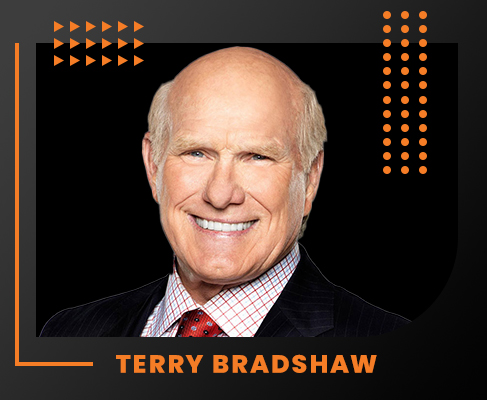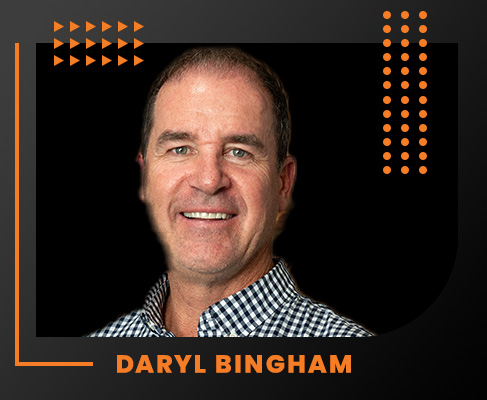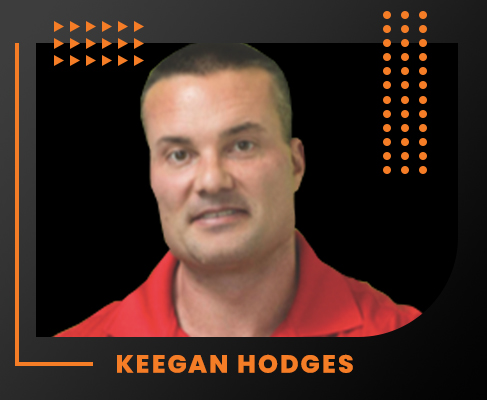Tom Howard, VP of Customer Experience at ServiceTitan and Owner of Lee’s Air has been in the industry for decades. While life has taken him in different directions, he’s always found his way back to home services. Tom has a great deal of expertise in a variety of areas, but his usage of lean management and getting his team to understand the numbers really stick out as some simple ways that can help our listeners impact their bottom line today.
Traveling Back to the Trades
Like many of our To The Point guests, the trades found Tom. When he was 15 years old, his mother told him he needed to find a job. Unsure of what to do, a young Tom asked a man repairing the family refrigerator if his company had any openings. Sure enough, they needed someone to clean the trucks and sweep the floors. Tom rode his bike there faithfully every day for four years, and started to learn the HVAC ropes. As a young adult, Tom joined the Church of Jesus Christ of Latter Day Saints and used the money he had saved at the job on a 2-year mission trip to Hungary.
When Tom came back stateside, he was broke and looking for work to afford college. He had friends in California that assured him school was inexpensive there, and quickly found a job as a salesperson at an air conditioning company. He found out fast that sales was not his calling, but he did design a few computer programs to help sell air conditioning that landed him a role in the office. At this point in time, Tom was still focused on earning a higher education and joined BYU, graduating with a degree in finance. Before long, Tom had stopped enjoying finance and quit his job. With a child and wife to provide for, Tom was once again looking for work.
Lee’s Air
Tom’s former employer, Lee’s Air had recently had a death in the family and reached out to Tom asking if he’d like to come back on as a GM. He took the job, and quickly helped steer Lee’s Air through the Great Recession. He bought the company a year later, and it continued to grow year after year under Tom.
In the first few years, the recession made things quite difficult. Tom felt over his head many times, but used what we love to call “Rob & Duplicate” (R&D) to keep moving forward. He would fly out to every shop that he could, and learn what they were doing right so he could implement his own version of successful practices at Lee’s Air. What Tom points out is that there’s no air conditioning or plumbing college that teaches you how to run a home services company. Sure, you can learn the technical side of things, but they won’t teach you how to forecast, analyze, and really run your business. There are services out there that can help do a lot for you, but learning it yourself is a challenge. Tom didn’t care if a shop was a $500,000 organization with 2 technicians or a 100-million dollar operation, there was always something he could learn from each system. WIth Tom at the helm, Lee’s Air started at 1.6 million in 2010 and is projected for over 25 million by the end of 2021.
Good Advice From A Bad Tomato
So, how did Tom manage to take Lee’s Air through the recession and continue to grow in a highly competitive market? To fully understand the explosive growth, it takes more than just understanding the training and processes that Tom implemented into the business. In fact, we have to start with how a tomato-growing Pebble Beach billionaire turned convict found employment under Tom.
Tom had an accountant that had done something really extraordinary for one of his friends that was dying from cancer. At the funeral, Tom told this accountant that if he ever needed anything, he would come through. A few years later, the accountant called in the favor. The request seemed simple at first: hire someone at Lee’s for minimum wage. Tom quickly agreed, and got ready to set up the interview…to discover an interview wasn’t really an option.
The person who Tom was to hire was in federal prison, in fact. Frederick Scott Salyer, a former CEO for a massive billion-dollar tomato processing operation had been found guilty of some financial crimes and sentenced to 6 years in prison. In order to get early release, he had to find a work share which is where Tom hiring him came into play.
Salyer was a bit of an HR nightmare according to Tom, but having grown his operation to almost 200 million in revenue in under ten years, certainly had some value. Salyer recommended to Tom looking into lean management in order to get Lee’s Air to the next level. Tom immediately put Salyer on that project, and before long Lee’s had a lean management trainer and program underway. They started time clocking everything down to the second, and used that information to develop processes to increase efficiency.
Lean Management
Lean management not only helps you understand where things can be improved in your business, it also teaches you how to design processes that people will actually follow. It’s more than just filling out some book that will sit on a shelf and collect dust. There is a clear standard at Lee’s, from how long things should take and how much it should cost to cleanliness standards throughout the company. Tom points out that while it can be easy to ignore some trash lying around on the shop floor or in a company truck, especially when it’s busy, that it sends a message you don’t want your team to receive. If some trash is okay in the truck, is it okay in your customers’ home?
In 2014, Lee’s implemented lean management training and started automating and improving processes throughout the company. ServiceTitan was another major part of this initiative, allowing them to automate reports, forms, and so much more. The next year, they skyrocketed to 9.4 million in sales while only adding a single person to the office staff. This is around 5x the industry profit standard, which is around 1-2% for an AC company in the United States. Lee’s shoots higher, looking at the 13-14% range as a baseline.
How Can I Start Today?
Making a huge impact on your net profit can be done in a number of ways, but it doesn’t have to be simply changing your pricing, marketing, or many of the other external approaches that business owners often take. Oftentimes, it’s as simple as going back to the business basics. From implementing training programs for lean management and understanding the finances to learning how to forecast, getting your whole team up to speed might just be your solution to getting to that next revenue goal.
Forecasting
Budgeting is more than just understanding your P&L sheet. Tom has seen company after company build a budget for that month without taking into account any forecasting. Sure, summers are often a boom and months like February can be a drag, but if you don’t know what you have been making historically, you’re essentially just guessing month to month where you should stand. When you’re building out a budget, you need to make sure you have a baseline for years past to know what to expect. By taking the last few years of data for each month and taking an average, you can set monthly goals based on your trends. It’s okay to have months of loss (not ideal, but it happens!) so long as your yearly goals are met. If you have this data accessible, you might find that even though you’re having a down month, you’re actually ahead for the year based on your forecasted revenue for the month!
Tom compares no forecasting to driving a car without gauges and a blanket over the windshield. As business owners, we often know when it’s busy. You walk into the office and the phones are ringing and everyone is freaking out. That’s when we know things are great! It doesn’t have to be that way, though. With the right staffing, forecast, procedures and processes, you can have a calm office and still be kicking ass. Forecasting is really simple stuff, too. It’s adding, subtracting, dividing, and multiplying. You can do all of it on a phone calculator, and there are plenty of YouTube videos out there to help you learn. There’s nothing stopping you from going out and getting things done.
Transparency and Understanding the Numbers
A lot of business owners won’t associate transparency with being able to walk away from your business, but it’s absolutely essential to create a self-sustaining business model. It’s all-to-common for owners to feel like they can’t leave for a second without things turning into chaos, and for their phones to ring off the hook if they ever dare to step out of the office. It doesn’t have to be that way! In addition to creating processes and procedures for each aspect of your company, bringing your team into all aspect of your business and having transparency about the financials is vital. Many owners will push back, pointing to employees not being able to handle it. Tom has it heard it many times that employees think the business is making way more than it actually is, seeing the $20,000 install and assuming we take $17,000 home. Showing them the financials can actually help them understand that’s not the case!
At Lee’s Air, anyone on the team can see the financials at any time. They can see what how much the company is making or losing, the balance sheets, etc. The install manager always knows how much money is in the bank account. By giving the entire team financial training, Tom knows that his team can take a look at the numbers and understand just where everything is at. This transparency also opens up the doors for conversations, and to set goals based on the financials. Now when his team sees the EBITDA, they know what it represents. They can also understand how their role and performance affects EBITDA. Each team member understands 5 simple things: Revenue, Cost of Sale, Gross Margin, Overhead, and Net Profit. Techs understand they affect cost of sale, people in the warehouse understand how they affect overhead, and so on.
Full Buy-In
Getting your team to buy-in to everything is key, and their understanding of the financials is a big part of that. Each department and team member at Lee’s has KPIs that are tied into the numbers, and the transparency and understanding allows for the team to have control over their own success. Bonuses are tied into the KPIs, and Tom has not only lowered his salary but also tied his own bonuses to the KPIs of the team. If they don’t make money, he doesn’t either!
By establishing full financial transparency and tying in KPIs to bonuses, everyone from technicians and installers to department leaders know where they’re at and what they need to do to push the company forward. While they may not be shareholders, this definitely makes them stakeholders.
Execute Your Plan
No matter what stage of business you’re in, you have to have a plan and you need to set goals. Ken Goodrich once told Tom that the only regret he has is that he didn’t make bigger goals sooner. Don’t listen to people that say you can’t hit your goals, and believe you can do it. Whether you’re a small crew with a single truck or a multi-million dollar operation, there’s nothing really unique that a successful company is doing that you can’t replicate in your own business. Stop making excuses and just go do it!


